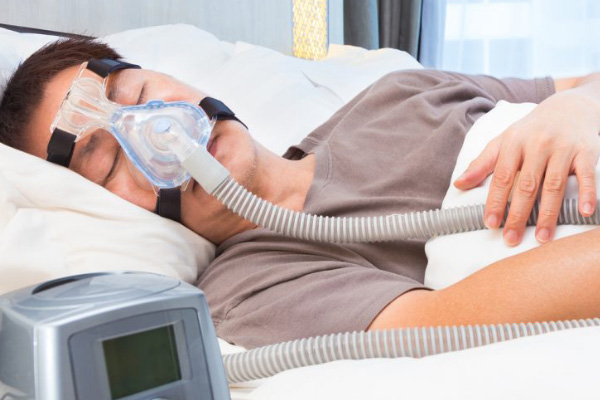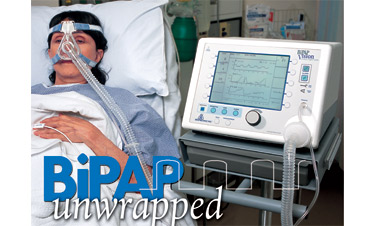Bipap vs. CPAP: Which Is the very best for Your Sleep Disorder?
When browsing the intricacies of sleep problems, the selection in between BiPAP and CPAP therapy is a vital factor to consider. Each modality uses special benefits customized to particular problems, yet the choice rests on private patient demands and comfort levels. While CPAP supplies a consistent air flow suitable for obstructive rest apnea, BiPAP's dual pressure setups may enhance convenience for those with even more intricate respiratory problems. Comprehending these differences can substantially impact treatment efficiency, leaving one to contemplate which option really aligns with their health demands and way of life.
Comprehending Rest Disorders
Sleep conditions encompass a variety of conditions that interrupt normal sleep patterns, influencing both the high quality and duration of remainder. These problems can show up in various forms, consisting of sleeplessness, rest apnea, narcolepsy, uneasy leg disorder, and parasomnias. Each condition offers unique challenges, often leading to substantial daytime exhaustion, cognitive impairment, and psychological disturbances.
Insomnia is defined by difficulty dropping or staying asleep, while rest apnea involves repeated interruptions in breathing during sleep, frequently bring about fragmented remainder. Narcolepsy, on the various other hand, is marked by extreme daytime drowsiness and sudden rest assaults. Agitated leg syndrome causes awkward experiences in the legs, triggering an uncontrollable desire to relocate them, which can also impede the capability to sleep.
The impact of sleep conditions prolongs past private wellness, influencing overall efficiency, partnerships, and lifestyle. Understanding the certain nature of each problem is vital for reliable medical diagnosis and therapy. As rest health and wellness ends up being significantly recognized as an essential element of general health, attending to these disorders is necessary for boosting both sleep quality and day-to-day performance.
Exactly How CPAP Functions
Constant Positive Airway Stress (CPAP) therapy is regularly employed as a key treatment for obstructive sleep apnea (OSA) The device of CPAP involves the usage of a machine that supplies a stable stream of air via a mask worn during sleep. This air movement preserves positive stress in the respiratory tract, preventing the collapse or blockage of the throat that can happen throughout sleep.
When an individual breathes in, the CPAP device gives a continuous circulation of air, guaranteeing that the respiratory tract stays open - BiPAP Rental. This not only minimizes the symptoms of OSA, such as snoring and disrupted sleep patterns, however likewise minimizes the associated health and wellness dangers, consisting of cardio issues and daytime fatigue
The stress setups on a CPAP equipment can be tailored to satisfy specific patient requirements, commonly determined with a rest research. Overall, CPAP therapy has been revealed to dramatically improve the quality of sleep and overall health and wellness for people enduring from obstructive rest apnea.
Just How BiPAP Works
BiPAP, or Bilevel Positive Air Passage Pressure, is a specific form of non-invasive ventilation that is especially valuable for people with problems such as complicated rest apnea or respiratory disorders. Unlike CPAP, which delivers a continuous stream of air at a solitary stress, BiPAP gives 2 unique pressure settings: a higher inspiratory pressure for breathing and a reduced expiratory stress for exhalation. This dual-pressure method enables less complicated breathing, lowering the initiative needed throughout exhalation.
The tool runs with a mask fitted over the nose or mouth, linked to a machine that generates atmospheric pressure. When the client inhales, the equipment supplies the greater stress to help with air flow, making sure that the air passage remains open. Upon exhalation, the machine automatically lowers the pressure, making it a lot more comfy for the client to breathe out.

Key Distinctions Between BiPAP and CPAP

In comparison, BiPAP (Bilevel Favorable Airway Stress) supplies two different pressure setups: one for breathing and a reduced one for exhalation. This dual pressure system allows for even more comfy breathing, particularly for clients that battle with exhaling against a constant stress. BiPAP is frequently suggested for people with complex sleep apnea, chronic obstructive pulmonary illness (COPD), or those who need added assistance throughout rest.
Additionally, the intricacy of BiPAP devices generally leads to a higher price and needs much more cautious titration than CPAP. BiPAP Rental. Recognizing these crucial distinctions can aid in recognizing which gadget may be preferable for details rest problems, establishing the foundation for enlightened therapy choices
Selecting the Right Therapy
How can one determine one of the most ideal treatment for handling rest conditions? The decision between BiPAP and CPAP therapy mostly pivots on the details features of the rest condition, the client's overall health, and their convenience with the gadget. CPAP, which provides a continuous stream of air, is frequently recommended for obstructive sleep apnea (OSA) It keeps an open respiratory tract during sleep, successfully stopping apneas and hypopneas.
Alternatively, BiPAP supplies two levels of stress: one for inhalation and a reduced one for exhalation. This dual pressure system is advantageous for people with complicated rest apnea or those who experience difficulty exhaling versus a continuous stress. Additionally, BiPAP is commonly suggested for individuals with breathing problems, such as chronic obstructive lung condition (COPD), where differing stress settings can improve convenience and compliance.
Ultimately, a thorough examination by a rest specialist, including a sleep research, can aid identify which therapy lines up finest with the person's needs. Aspects such as comfort, simplicity of usage, and particular clinical problems must likewise be taken into account to optimize therapy results.
Conclusion
In summary, both BiPAP and CPAP serve distinct objectives in the management of sleep disorders. CPAP is effective for sites obstructive sleep apnea with regular air movement, while BiPAP supplies twin stress setups that enhance comfort for those with complex sleep apnea or respiratory issues. The selection in between these treatments need to be led by specific demands and conditions, necessitating a comprehensive assessment by a sleep specialist to make sure optimum therapy results and improved quality of rest.

On the whole, CPAP therapy has actually been revealed to significantly improve the high quality of rest and overall health for individuals experiencing from obstructive rest apnea.
BiPAP is often advised for people with complex sleep apnea, chronic obstructive pulmonary disease (COPD), or those who require extra support during rest.
CPAP is efficient for obstructive sleep apnea with constant air flow, while BiPAP uses double stress setups that boost convenience for those with intricate rest apnea or respiratory problems.
Comments on “BiPAP Rental: High-Quality Devices for Sleep Apnea Relief”